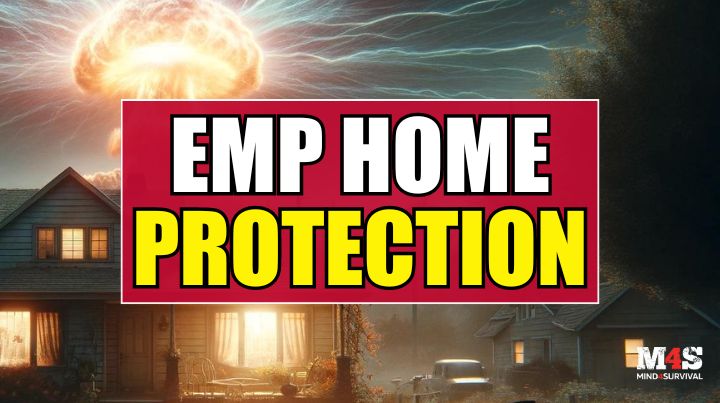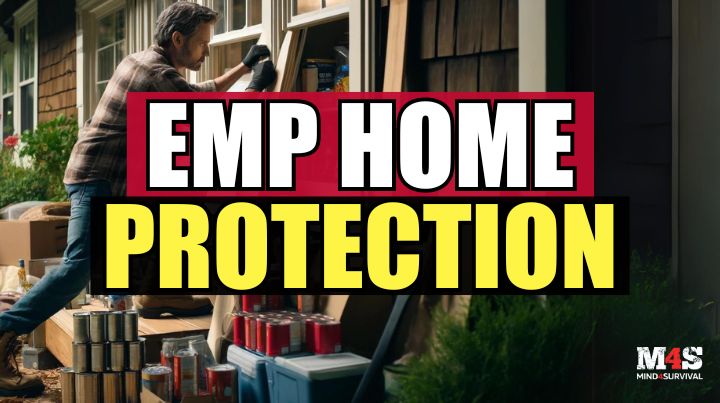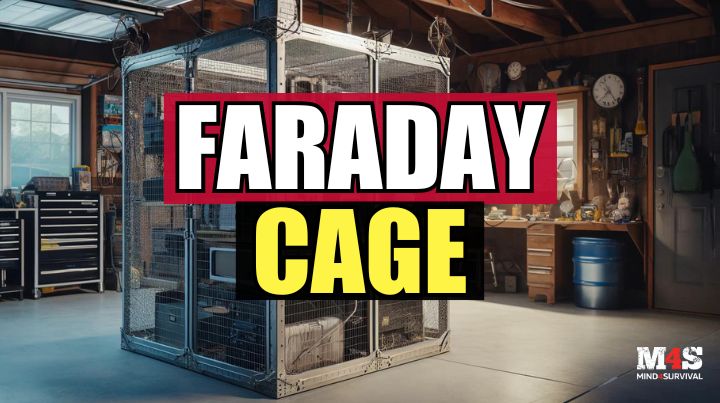EMP Protection for Home

In today's rapidly advancing technological era, the safety of our homes from electromagnetic pulses (EMP) has become a pressing concern. EMP protection for the house is not just a concept from science fiction. It's a necessary safeguard against potential disasters that can disrupt our electrical systems and damage all the electronics we rely on daily.
To help understand how to protect our homes from EMPs, I interviewed Dr. Arthur T. Bradley, a NASA engineer and leading EMP expert. His in-depth knowledge, understanding, and perspectives on EMPs help demystify this often confusing topic. Join me as I dive into this critical preparedness topic with the foremost authority in the field.
Can You EMP Proof Your House?
Yes, it's possible to protect your home from EMPs with modern technology. You can shield your electrical system and gadgets from voltage surges by installing surge protectors and specific devices. For example, an EMP shield installed at the breaker box guards against lightning and EMP electromagnetic disturbances.
Home Surge Protection
To enhance your resilience, consider purchasing and integrating surge protection technologies at multiple points, including major appliances and electronic devices. Advanced EMP protection technology can block electromagnetic interference, ensuring the safety of all household electronics. This approach secures your home's electrical system and can save your electronic devices, such as computers, during an EMP event.
Layered Defensive Strategy
Adopting a layered defense strategy is critical. Starting with a robust EMP shield at your home's entry point minimizes risk. Adding protective measures around sensitive electronics further strengthens your home's defense against EMPs and solar flares. With careful planning and the right technology, achieving comprehensive EMP protection for your home is possible, offering a secure environment for your family.

How to Protect Your Home From an EMP
Implementing EMP protection measures in your home involves a multifaceted approach. It begins with the installation of a surge protector in your breaker panel. The Siemens FS 140 is a recommended product known for its reliability and affordability. Following this, applying high saturation ferrites to the main power lines before entering your house can further safeguard your electronics from fast current transients. Additionally, using broadband ferrites and surge-protected power strips for individual devices adds another layer of security.
Storing them in Faraday bags offers an excellent solution for electronics not in use. These bags are designed to shield their contents from electromagnetic fields entirely, rendering them impervious to EMP damage.
Addressing the broader scope of EMP protection, it's essential to consider the resilience of your entire home. This includes potential upgrades to make rooms within your home act as Faraday cages, thus providing complete EMP shielding. However, such measures require a large budget, meticulous planning, and execution.
Protecting Solar Panels and Generators
Protecting solar panels and backup generators from power surges is essential for homeowners investing in alternative energy. By installing ferrites on the lines connecting solar panels to inverters and ensuring the wires on your system's DC and AC sides are surge-protected, you can secure your renewable energy sources against EMPs.
Does EMP Shield Really Work?
EMP shield can protect your home from electromagnetic pulses and coronal mass ejections (CME). These devices are easy to install and rigorously tested. They are designed to block harmful voltage spikes that can damage electrical equipment. The ability of these shields is backed by military standards and Homeland Security endorsements, ensuring they meet high safety and effectiveness criteria.
Integrating an EMP shield into your home's electrical system is a frontline defense against potential EMP threats. Having home surge protectors operating protects against a voltage spike from natural events like a solar flare or man-made causes like an electromagnetic pulse. The shield neutralizes the risk, as with lightning protection, before it can impact your electronics. This level of protection is crucial in preserving the functionality of household devices and your living space's overall safety and security.
Adopting EMP protection measures is essential for anyone looking to secure their home against electromagnetic disturbances. By choosing a shield that has undergone stringent testing and received approval from authoritative bodies, homeowners gain peace of mind by doing everything they can to protect their families. Investing in an EMP shield represents a proactive, preparedness approach to ensuring your home's electrical system remains safe from EMPs, CMEs, and lightning strikes.
What Material Can Block an EMP?
Metals like copper, aluminum, and galvanized steel are known for shielding electronics. These materials can be used to construct a Faraday cage, a special enclosure that prevents EMPs from damaging the devices inside. The cage disperses the electromagnetic interference around its exterior, preventing it from damaging the enclosed device or electronics.
Faraday cages are not just theoretical. They are practical tools for protecting sensitive electronic equipment from EMPs. By utilizing conductive materials to build and install these cages, you create a barrier against damaging electromagnetic energy. This ensures that essential devices, such as radios and computers, remain operational even after an EMP event. It's a straightforward yet effective method to keep your electronics safe in our modern world.
How to Make Your Own Faraday Cage
In a world where the threat of electromagnetic pulses (EMPs) can render electronic devices useless, having a Faraday cage offers a simple yet effective form of protection. Building one using a common household item—a metal trash can—provides a practical, budget-friendly solution for safeguarding your valuable electronics. Follow these steps to create your EMP-proof storage:
1. Choose a Metal Trash Can: For effective EMP shielding, ensure it's made of a conductive material like metal. Do not use a rubber or plastic trash can.
2. Line the Inside: Line the inside wall of the can with a non-conductive material, such as cardboard or foam. This prevents any stored electronics from making contact with the metal.
3. Place Electronics Inside: Place the devices you wish to protect inside the lined trash can. Make sure they don't touch the metal directly.
4. Seal the Lid: Securely close the trash can with its metal lid. For added protection, you might consider sealing the edges with a conductive gasket or conductive tape (copper foil tape) to ensure a tight fit and minimize any gaps where EMPs could penetrate.
This simple yet effective approach will safeguard your electronic devices against EMPs.

What Electronics Will Survive an EMP?
EMPs can severely damage unprotected electronic devices. However, those shielded with appropriate EMP protection technology or stored in Faraday cages stand a much better chance of surviving. Devices such as emergency radios, LED flashlights, and even vehicles with EMP protection installed can remain operational.
It's crucial to prioritize protecting devices essential for transportation, communication, and survival in the aftermath of an EMP event. After all, if electronics are destroyed and the grid is down, the odds of replacing them are improbable. Therefore, it's essential to protect what you have now to have options to replace it in the aftermath of an EMP or CME.
The Bottom Line on EMP Protection for the Home
In the face of potential EMP threats, taking the personally responsible steps to protect your home and its electronic devices is a no-brainer. After all, you are safeguarding your investments and ensuring your family's security and well-being in uncertain times.
By understanding the principles of EMP protection and implementing these strategic measures, you can enhance your home's resilience against electromagnetic disturbances. In so doing, you offer yourself and your loved ones a greater sense of security in a world dependent upon electronics.
What are your thoughts on protecting your home from an EMP or CME? Have you started? Let us know in the comments below.
Additional Resources
- EMP Truth: What You ACTUALLY Need to Know! (With Video)
- What is an EMP? The Expert Guide to Electromagnetic Pulses!
- What Does an EMP Do? EMP Expert Arthur T. Bradley FACTS!
- Dr. Bradley's Website
Stay safe,

FREE Guide
Read the Best Seller
Join Mind4Survival
Stay informed by joining the Mind4Survival! 100% Secure! 0% Spam!
Affiliate Disclosure...
Mind4Survival is a free, reader-supported information resource. If you make a purchase through our link, we may, at no cost to you, receive an affiliate commission.




